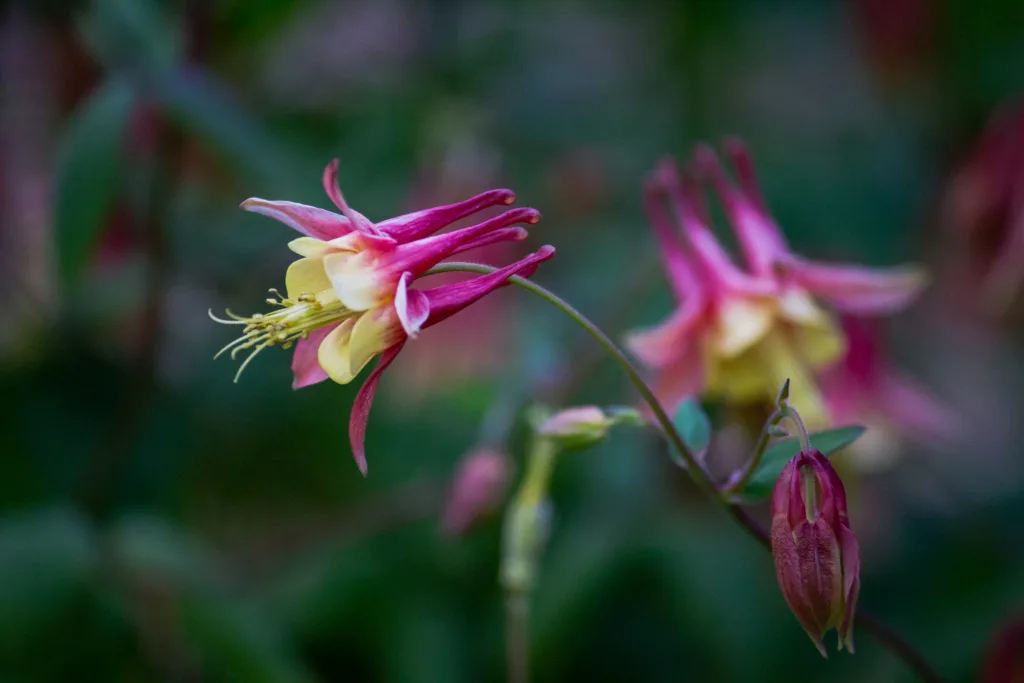
Columbine, known for its distinctive, colorful flowers and delicate foliage, is a favorite among gardeners. These perennials are relatively easy to grow and can add a touch of elegance to any garden. This post will cover everything you need to know about growing columbine, including soil type, light requirements, water needs, fertilizer, pest control, pruning, propagation, and overwintering. Let’s dive into the essential steps to cultivate healthy and vibrant columbine plants.
Soil Type
Columbine thrives in well-drained, fertile soil. These plants prefer slightly acidic to neutral soil with a pH between 6.0 and 7.0. To prepare the ideal soil, mix in organic matter such as compost or well-rotted manure. This enriches the soil and improves drainage, providing the perfect environment for columbine roots to grow. Avoid heavy clay soils, which can retain too much moisture and lead to root rot.
Light Requirements
Columbine plants grow best in partial shade to full sun. They need at least four to six hours of sunlight daily. In hotter climates, providing afternoon shade helps protect the plants from the intense midday sun, which can scorch the delicate foliage. However, in cooler regions, columbine can handle more sun exposure. Adequate light ensures robust growth and vibrant blooms.
Water Needs
Columbine requires consistent moisture, especially during its growing season. Water the plants regularly to keep the soil evenly moist but not waterlogged. Aim to water deeply once a week, increasing the frequency during dry spells. Mulching around the base of the plants helps retain soil moisture and regulate temperature. Be cautious not to overwater, as columbine roots are susceptible to rot in overly wet conditions.
Fertilizer
Fertilizing columbine is essential for healthy growth and abundant blooms. Use a balanced, slow-release fertilizer in early spring as new growth begins. A fertilizer with equal parts nitrogen, phosphorus, and potassium works well. Apply the fertilizer according to the package instructions, and water thoroughly after application to help the nutrients reach the roots. Avoid over-fertilizing, as excessive nutrients can lead to weak, leggy growth.
Pest Control
Columbine is generally resistant to pests but can occasionally be affected by aphids, leaf miners, and powdery mildew. Regularly inspect your plants for signs of pest activity. If you notice aphids or leaf miners, spray the affected areas with insecticidal soap or neem oil. To prevent powdery mildew, ensure good air circulation around the plants and avoid overhead watering. Prune any affected leaves to prevent the spread of disease.
Pruning
Pruning columbine promotes healthy growth and encourages continuous blooming. After the flowering, cut back the spent flower stalks to the base of the plant., this may encourage a second bloom. In early spring, remove any dead or damaged leaves to promote fresh, new growth. Regular pruning keeps your columbine looking tidy and vibrant.
Propagation
Columbine can be propagated through seed or division. To propagate from seed, collect seeds from mature plants in late summer or early fall. Sow the seeds directly in the garden in late fall or early spring. For division, dig up a mature plant in early spring or fall and carefully separate the root clump into smaller sections, each with several shoots and roots. Replant the divisions immediately in prepared soil.
Overwintering
Columbine is hardy in USDA zones 3-9 and typically requires minimal winter care. In colder climates, apply a layer of mulch around the base of the plants in late fall to insulate the roots and conserve moisture. This helps protect the plant from freezing temperatures. In regions with mild winters, columbine usually doesn’t require special overwintering care. However, if you experience severe winters, consider covering the plants with burlap or frost cloth for added protection.
Happy Gardening
In conclusion, growing columbine involves several key steps: preparing the right soil, providing adequate light, watering correctly, fertilizing appropriately, managing pests, pruning regularly, propagating as needed, and protecting them during winter. By following these guidelines, you can enjoy healthy, vibrant columbine plants that enhance your garden with their beautiful blooms and delicate foliage. With a little attention and care, your columbine will reward you with years of beauty and enjoyment.
Please be sure to check out my Gardening Blog Post Page for more tips on all types of gardening. Including Seed Starting, Orchids, Water Gardening, Coldframe Gardening, Indoor Bulb Gardening, Hydroponics, Container Gardening, Mums, Herbs, African Violets, planting Bulbs, Flower Gardening, Vegetable and Fruit Gardening, Indoor Houseplants of all kinds, Cactus, Succulents, Hanging plants, Deer resistant plants and even Bird, Bee, Butterfly and Hummingbird Gardens!
